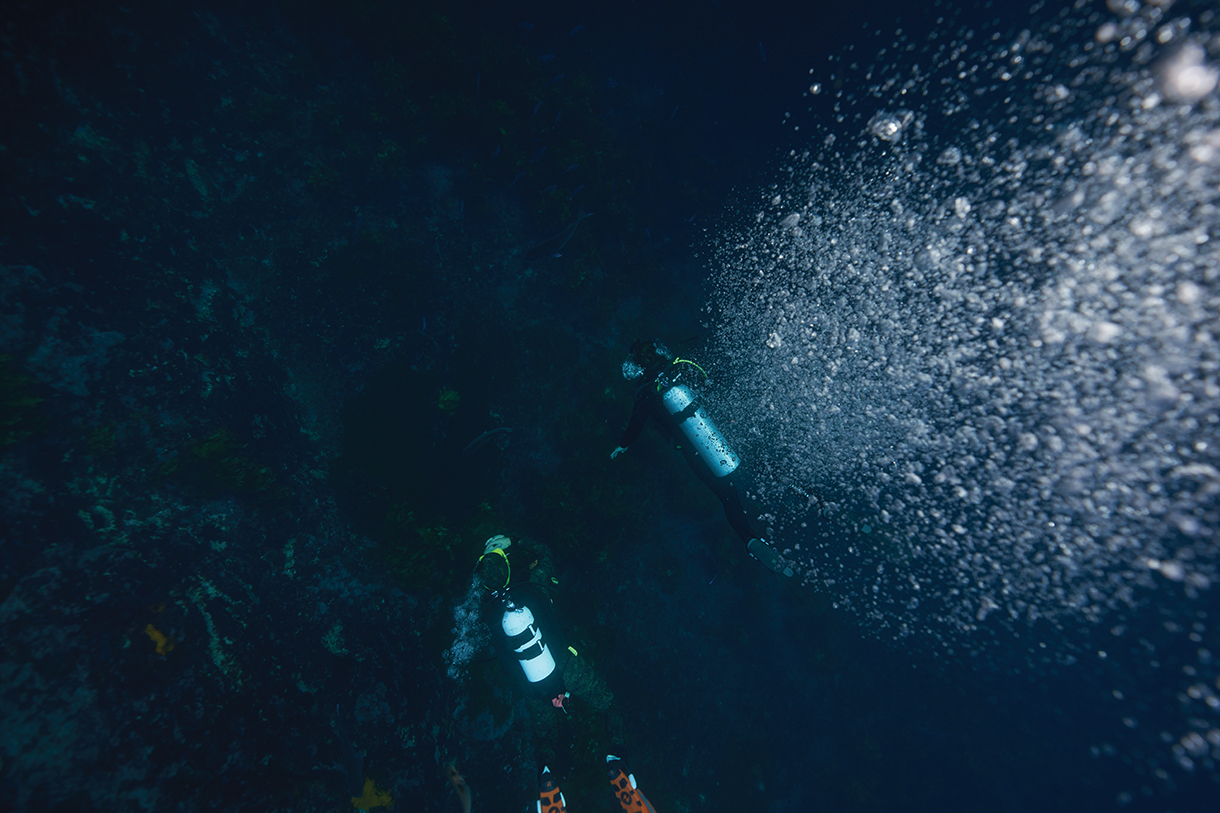
Incredibly remote, cold-water diving connects you to the world’s most pristine and exotic oceanic habitats.
Ponder for a moment the notion that 80 percent of Earth’s oceans are unmapped, unobserved, and unexplored. The ultimate antidote to a habitual city routine, the ocean can offer the last frontiers of discovery—actual uncharted waters. In the following pages, find the potential for adventure that lies not only in the remote dive spots and destinations themselves but in the preparation and expedition expertise it takes to reach them.
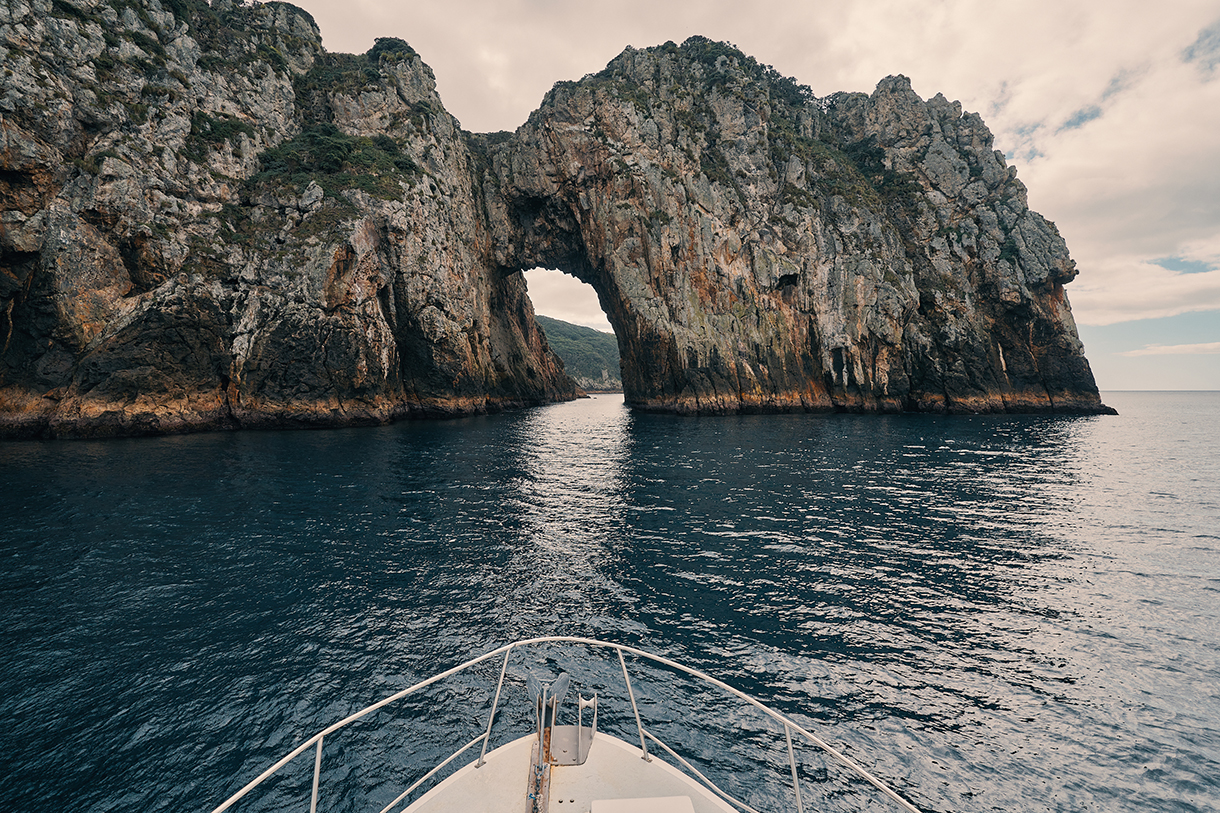
Poor Knights Islands, New Zealand
There are more than 60 dive sites scattered among the Poor Knights Islands, a marine reserve 15 miles off the Kiwi coastal town of Tutukaka. The Poor Knights group includes two large islands (Tawhiti Rahi and Aorangi) as well as 10 islets that span approximately six miles. Sheer cliffs weathered to shades of ocher, charcoal, and chestnut provide a striking visual above water.
Underwater, shoals of blue maomao and curious demoiselle consider themselves permanent residents alongside spotted black gropers and Lord Howe butterflyfish, all due to the islands’ location at an oceanographic intersection between temperate and subtropical waters. From the sponge gardens to the gorgonian fields, Poor Knights offers pristine diving. Perhaps that’s why legendary French oceanographer Jacques Cousteau listed it as one of his top 10 dive spots in the world.
Travel Route
A three-hour drive from Auckland, New Zealand.
Lodging + Dining
Farther up the coast in Northland is the 22-suite The Lodge at Kauri Cliffs (from $1,700; robertsonlodges.com), one of a trio of hotels that comprise New Zealand’s Robertson Lodges. As the cliffs give way to Takou Bay, the Bay of Islands, and the Pacific Ocean beyond, discover a deep and vast serenity where ocean meets sky. An all-inclusive resort, the chef creates excellent gluten-free breads and pastries.
Diving Tips
Dive! Tutukaka (from $140 for a two-tank dive; diving.co.nz) provides a vast array of equipment with an incredibly knowledgeable staff. Full boat hires allow for greater flexibility, from departure time to dive site preferences. While some food at sea can be a bit lackluster, Dive! Tutukaka creates custom lunches and snack platters that adhere to most dietary restrictions.
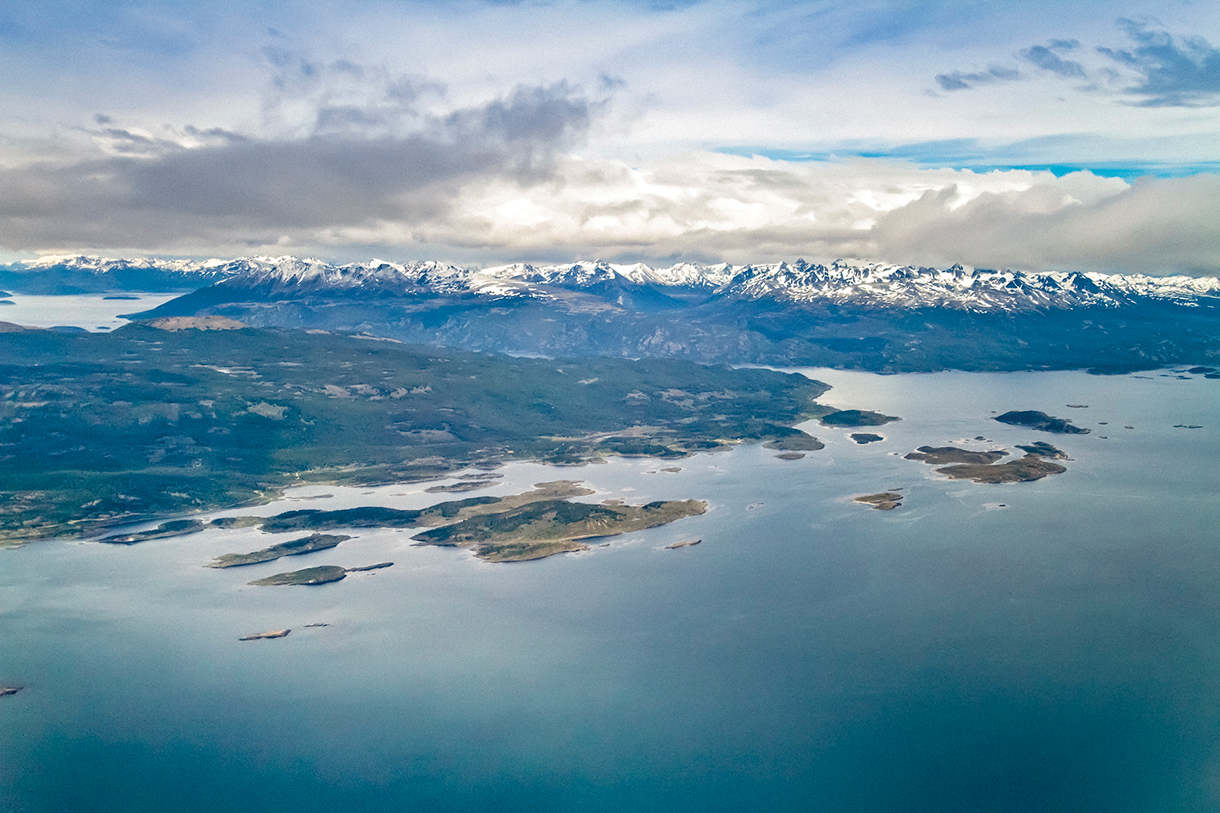
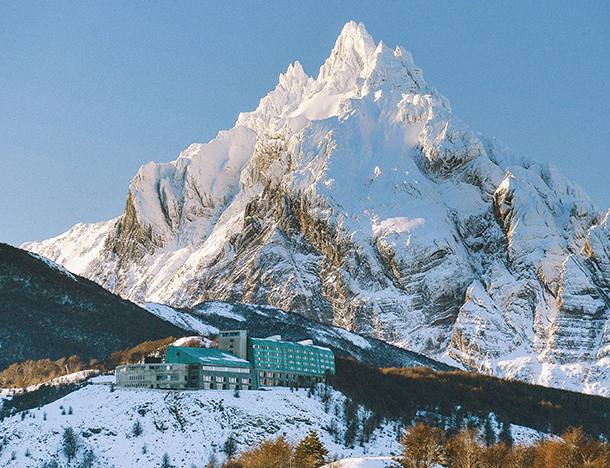

Ushuaia, Argentina
Located on the Tierra del Fuego archipelago at the tip of South America, Ushuaia (pronounced oosh-why-a) proudly embraces its nickname, the “End of the World.” The departure city for most Antarctic expeditions, it was first charted by Ferdinand Magellan in 1520. (Many vessels still use Magellan’s maps to navigate his namesake strait.)
Oceanic temperatures never exceed 46 degrees Fahrenheit, thus it is necessary to complete dry suit certification to safely navigate the shallow waters from the shores of the Beagle Channel, surrounded by the Martial Mountains. Decreased salinity and increased density allows for extraordinary visibility of a vast array of marine life. Thick, bronze-colored kelp forests provide habitat to colorful nudibranchs as well as a variety of starfish and giant invertebrate species. Subantarctic seaweed like the Durvillaea antarctica is used in local stews, but it’s the scarlet king crab that excites both in the ocean and at the dinner table.
Travel Route
A three-hour flight from Buenos Aires, Argentina.
Lodging + Dining
Arakur Ushuaia Resort & Spa (from $300; arakur.com) is perched on a hill within the Cerro Alarkén Nature Reserve. The 117-room resort’s duo of outdoor hot tubs boasts the best panoramic views of Ushuaia, while their shuttles make it simple to head into town and to Restoran Volver, which specializes in its preparation of fresh king crab and sea urchin.
Diving Tips
April through May and July through October are the best months for spotting the greatest diversity of whales, other mammals, and crustaceans. The deeper channels between the islands supply nutrient-dense waters that attract orcas, gray whales, southern minke whales, and humpbacks, as well as seals and dolphins.
Because it is essential to dive in a dry suit, it’s advisable to get Dry Suit Diver certified prior to arrival. PADI (padi.com) offers courses nationwide from $129 while local outfitter Beagle Buceos (beaglebuceos.com) arranges Ushuaia boating excursions, equipment rentals, private guides, and hotel transfers.

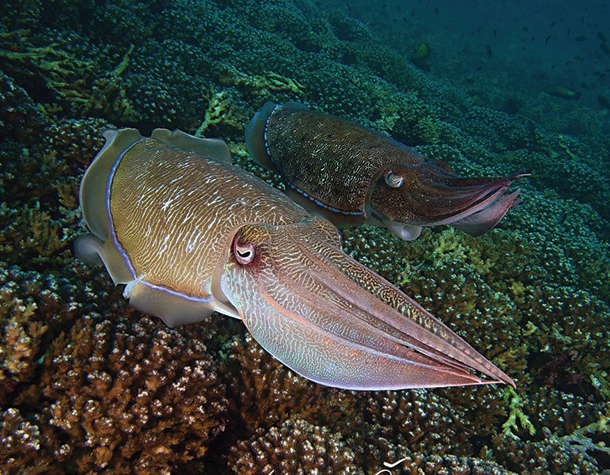
Muscat, Oman
The oldest independent state in the Arab world, Oman shares a border with Yemen to the south, the United Arab Emirates to the north, and Saudi Arabia to the west. Boasting roughly 1,970 miles of coastline, much of it rugged, the country overlooks the Arabian Sea as well as the Gulf of Oman. The capital city of Muscat doubles as a major port. Thanks to a quickly descending shelf just offshore, it also proffers some excellent diving.
A 40-minute boat ride north of Muscat, Daymaniyat Islands are a tiny archipelago of rocky islands with 12 dive sites that was deemed the first marine reserve in Oman. From endemic marine species, such as Oman anemonefish, Oman butterflyfish, and Oman cuttlefish to two-faced toadfish and blue-barred parrotfish, the underwater wildlife seem more curious than fearful.
Travel Route
A 1.5-hour flight from Doha, Qatar, or Dubai, United Arab Emirates.
Lodging + Dining
Al Husn, or “castle” in Arabic, is an apt description for a 180-room hotel overlooking the Gulf of Oman. Grand in scale, scope, and size, the Shangri-La Al Husn (from $325; shangri-la.com) prizes tranquility, therefore welcoming guests over the age of 16. Its Luban Spa focuses on frankincense-centric services, as the spice originates from the local Boswellia tree. Mahhara Beach Bar serves flame-grilled seafood by the sea.
Diving Tips
Heralded as the Middle East’s new diving frontier, the water ranges from 73 degrees Fahrenheit in the winter to 89 degrees in the summer. While boats head out year-round, you’re most likely to see stonefish and whale sharks from December through April. MolaMola Diving Center (from $920 for a private day trip; molamoladivingcenter.com) handles everything from national park fees to equipment.
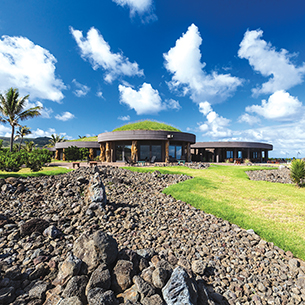
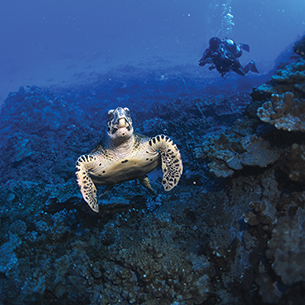
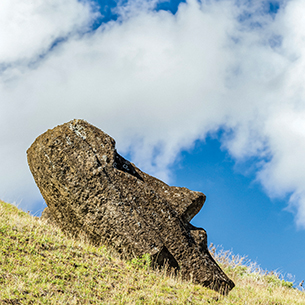

Easter Island, Chile
To call Easter Island remote would be an understatement. As the crow flies, the nearest inhabited landmass is 1,293 miles away (Pitcairn Island, population of around 50)—or roughly the distance from New York to Miami. Known to locals as Rapa Nui, the island exudes an ancient ambiance of volcanic rock mingling with low-lying vegetation. Mounds that resemble hills are in fact extinct volcanoes, and one of two main roads that loop around the island is intermittently unpaved. Well-known for its moai, centuries-old monumental statues crafted and carved by Polynesian colonizers, the island deeply embraces its history.
Find the majority of dive sites along the west coast, where coral reef blends beautifully among a network of lava rock caves, arches, and tunnels overflowing with sea life. On a single dive it’s possible to see roundbelly cowfish, gray-with-blue-spots scrawled filefish, mosaic morays, Galapagos sharks, and Chinese trumpetfish. Depending on which local tells the story, the submerged moai situated four minutes by boat from the harbor was either crafted and placed for a Hollywood movie or as a tribute to previous indigenous generations. The story lacks importance to the reef, which has embraced the moai—sea urchins, sea stars, and coral have made themselves comfortable in a rather stunning, unique display.
Travel Route
A 5.5-hour flight from Santiago, Chile.
Lodging + Dining
Each of the 75 rooms at Nayara Hangaroa (from $510; nayarahangaroa.com) feature private ocean-view terraces as well as perennially cool-to-the-touch stone- and lava-carved bed frames and room details. The hotel hosts a series of guided island excursions and will provide, for those seeking a little more freedom, 4x4 Can-Am ATVs to circumnavigate Rapa Nui.
A 15-minute walk from the hotel, Te Moana, a thatched-roof restaurant directly on the water, boasts the best ceviche in town, with diced fresh caught fish with coconut milk, lime juice, and sweet potato.
Diving Tips
Founded in 1989, Mike Rapu Diving Center (mikerapu.cl) remains a family business. Raised on the island, proprietor Christian Rapu, who is also a dive master, has an unrivaled knowledge of the islands’ dive spots and conditions surrounding them. Passionate about oceanic education and protection, Rapu leads many of the outfitter’s dives himself, both for tourists and the local schoolchildren.
As equipment is limited, it is advisable to bring your own mask for optimal comfort. Aqualung’s Plazma (from $129; us.aqualung.com) uses surgical-grade silicone to create its frameless panoramic diving mask.




